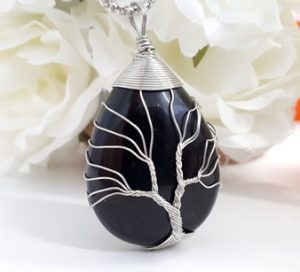
The Art of Placement: Essential Feng Shui Tips for Optimal Home Layout
Feng Shui, the ancient Chinese practice of arranging your environment to harmonize with the flow of energy, plays a vital role in creating a peaceful, productive, and supportive home. At its core, Feng Shui emphasizes the importance of layout and placement, guiding you in making decisions that positively affect your well-being. In this article, we will delve into essential tips for optimizing your home’s layout through the art of placement, ensuring a harmonious living space.
Understand the Bagua Map
The Bagua map is a primary tool in Feng Shui that divides your home into nine sections, each relating to different aspects of life like wealth, health, relationships, and career. Understanding where these areas lie within your home can help you effectively enhance the energies in specific aspects of your life. To apply the Bagua map:
- Draw a Layout: Create a scaled floor plan of your home. Lay the Bagua map over it, ensuring the bottom edge aligns with your main entrance.
- Identify Areas: Once aligned, identify which areas correspond to your personal goals and desires. For example, the wealth area is located in the far-left corner of the home from the entrance.
Create a Welcoming Entrance
The entrance, or "mouth of chi," is crucial in Feng Shui. It sets the tone for energy entering your home.
- Clear the Path: Ensure a clean, unobstructed entryway. Remove clutter and provide clear pathways.
- Use Inviting Decor: Incorporate a mat, plants, or art that represents your personal style. Soft lighting and mirrors can enhance the area, making it feel more welcoming.
Positioning Furniture for Flow
The arrangement of furniture can significantly impact the flow of energy in your home.
- Command Position: Place key pieces of furniture (like beds and desks) in the command position, ideally facing the door but not directly in line with it. This position fosters a sense of security and control.
- Avoid Blocking Paths: Keep pathways clear to promote smooth energy flow. Avoid placing substantial furniture against doors or blocking light sources.
- Create Intimate Groupings: For living spaces, arrange seating to promote conversation while avoiding sharp angles that can direct energy harshly toward occupants.
Harmonizing the Elements
Feng Shui utilizes five elements—wood, fire, earth, metal, and water—which can be incorporated into your decor and layout.
- Balance Elements: Assess your home for balance. If one element dominates, introduce accessories representing the other elements. For instance, if your space is heavy on metal (like metallic furniture), consider adding plants for the wood element.
- Color Matters: Use colors that reflect the desired element in specific areas. Green for wood, red for fire, yellow or browns for earth, grey and white for metal, and blues or blacks for water.
Consider Lighting and Air Quality
Proper lighting and air quality are cornerstones of Feng Shui and can significantly impact your mood and energy levels.
- Maximize Natural Light: Open curtains during the day, and use mirrors to reflect light and expand your space visually.
- Use Soft Lighting: For artificial lighting, opt for soft, warm lights instead of harsh fluorescents. Layered lighting—combining overhead, task, and accent lighting—can enhance comfort.
- Air Purification: Incorporate plants known for air purification such as spider plants or peace lilies, which not only clean the air but also bring natural beauty into your home.
Maintain Balance and Clarity
A key principle of Feng Shui is ensuring spaces are decluttered so energy, or chi, can flow smoothly.
- Regularly Declutter: Dedicate time to declutter regularly. Let go of items that no longer serve you, and create spaces for what you value.
- Organize Thoughtfully: Employ stylish bins, shelves, and other organizers to keep spaces tidy and organized which contributes to mental clarity.
Conclusion
The art of placement in Feng Shui is about more than just aesthetics; it’s about creating a harmonious environment that supports your life goals. By understanding the Bagua map, crafting a welcoming entrance, arranging your furniture thoughtfully, harmonizing the five elements, maximizing light and air, and maintaining clarity, you can foster a balanced and vibrant living space.
FAQs
Where can I find Feng Shui accessories for my home?
You can find a variety of Feng Shui accessories at local home décor stores, Asian markets, or online retailers like Etsy, Amazon, and specialty Feng Shui sites such as Feng Shui Import.
How often should I re-evaluate my home’s Feng Shui?
It’s a good idea to reassess your home’s Feng Shui when significant life changes occur, such as moving or a change in career. Otherwise, an annual evaluation can help maintain balance.
Are there specific plants that enhance Feng Shui energy?
Yes! Commonly recommended plants include the lucky bamboo for prosperity, peace lily for purity, and jade plant for wealth. Make sure to choose plants that thrive in your home’s conditions.
Can I incorporate modern design while maintaining Feng Shui principles?
Absolutely! Modern design can complement Feng Shui by focusing on clean lines, open spaces, and minimal clutter. Integrate Feng Shui colors and elements for a balanced aesthetic.
With these tips and insights into the art of placement, you’re well equipped to create a home that not only looks beautiful but feels energized and welcoming. Embrace the principles of Feng Shui to manifest a life filled with positivity and harmony!







